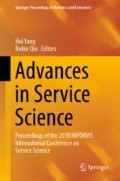Abstract
Data mining methods can be applied to human resources datasets to discover insights into how employees manage their careers. We examine two elements of career trajectories in federal government HR data. First, we apply association rule mining and sequential pattern mining to understand the prevalence and direction of interdepartmental transfers. Then we apply logistic regression and decision tree induction to understand and predict employee separation. In this specific application, we find that interdepartmental transfers are uncommon, except between branches of the armed services and out of these branches to the Department of Defence. We also find that demographics, compensation, and political transitions are significant factors for retention, but they account for only a small portion of the probability of a federal employee leaving service. We expect these methods would perform better in industry with a small amount of additional data gathered upon hiring and exit interviews.
Access this chapter
Tax calculation will be finalised at checkout
Purchases are for personal use only
References
Moussa S, Touzani M. A literature review of service research since 1993. J Serv Sci. 2010;2(2):173–212.
Boudreau J. On the interface between operations and human resources management. Manuf Oper Manag. 2003;5(3):179–202.
Lagard M, Cairns J. Modelling human resources policies with Markov models: an illustration with the South African nursing labour market. Health Care Manag Sci. 2012;15(3):270–82.
Hafeez K, Aburawi I. Planning human resource requirements to meet target customer service levels. Int J Qual Serv Sci. 2013;5(2):230–52.
Internet Archive. Federal employment data from the offices of personnel management. https://archive.org/details/opm-federal-employment-data. Accessed 20 Feb 2018.
Penn State. SWENG 545: Data Mining—7.2 Discovering Frequent Sequential Patterns on a Computer, Online Course, Accessed May 2018.
Office of Personnel Management. Federal Agencies List. https://www.opm.gov/about-us/open-government/Data/Apps/Agencies/. Accessed 20 Feb 2018.
Forte R. Logistic regression. In: Mastering predictive analytics with R. Packt Publishing, Birmingham;2015. p. 93–109.
Forte R. Tree-based methods. In: Mastering predictive analytics with R. Packt Publishing, Birmingham;2015. p. 201–8.
Acknowledgements
This paper is a summary of the results of our winning submission to Penn State’s university-wide Data Analytics Challenge, which was chaired by Dr. Robin Qiu with the support of the following committee members from Penn State’s Smeal College of Business, College of Engineering, College of Information Sciences and Technology, and the Great Valley Engineering Division. We are grateful for their support. Thank you, Jason Acimovic, Saurabh Bansal, Adrian Barb, Guoray Cai, Terry Harrison, Ashkan Negahban, Robin Qiu, Kathleen Riley, Chris Solo, Satish Srinivasan, Hui Yang, and Tao Yao.
Author information
Authors and Affiliations
Corresponding author
Editor information
Editors and Affiliations
Rights and permissions
Copyright information
© 2019 Springer Nature Switzerland AG
About this paper
Cite this paper
Healy, K., Lucas, D., Miller, C. (2019). Data Mining Methods for Describing Federal Government Career Trajectories and Predicting Employee Separation. In: Yang, H., Qiu, R. (eds) Advances in Service Science. INFORMS-CSS 2018. Springer Proceedings in Business and Economics. Springer, Cham. https://doi.org/10.1007/978-3-030-04726-9_9
Download citation
DOI: https://doi.org/10.1007/978-3-030-04726-9_9
Published:
Publisher Name: Springer, Cham
Print ISBN: 978-3-030-04725-2
Online ISBN: 978-3-030-04726-9
eBook Packages: Business and ManagementBusiness and Management (R0)

